
6-27 #SteamDeck : Huawei is reportedly building a massive semiconductor equipment R&D center in Shanghai; Apple has allegedly renewed efforts to develop AR-only glasses; Honor has showcased some of its latest AI innovations; etc.

Huawei Technologies is reportedly building a massive semiconductor equipment research and development center in Shanghai. The center’s mission includes building lithography machines, vital equipment for producing cutting-edge chips. Total investment for the the entire R&D base will come to about CNY12B (USD1.66B), according to the Shanghai government, which listed it as one of the city’s top projects for 2024. The campus covers about 224 football fields in area and is almost twice as big as the company’s renowned Ox Horn Campus, a European village-style site in the Chinese city of Dongguan. Like Ox Horn, the Shanghai campus will include trains for commuting between buildings in the campus. Huawei’s R&D spending in 2023 reached a record high of CNY164.7B (USD22.7B), representing 23.4% of its total revenue. (Android Headlines, Asia Nikkei, WCCFtech, Kr-Asia)

Samsung has announced that for the first time in the industry, it has successfully built a Compute Express Link (CXL) infrastructure certified by Red Hat. Elements that configure servers, from CXL-related products to software, can now be directly verified at the Samsung Memory Research Center (SMRC) located in Hwaseong, South Korea. Once CXL products are verified by Samsung, they can immediately be requested for product registration to Red Hat, enabling faster product development. Marking its first achievement through the infrastructure, Samsung has successfully verified its CMM-D product for the first time in the industry. The company can also provide tailored solutions to customers by optimizing products at earlier development stages.(Gizmo China, Samsung)


LG Display has supplied its two-stack tandem OLED panel to Dell’s notebook. LG Display has been manufacturing Tandem OLED panels at its E6-4 facility in Paju, South Korea since 1Q24. It is expected to ship around 100,000 units of the panel before end May 2024 for Dell. The facility is also manufacturing the OLED panels used by Cupertino. LG Display has so far spent KRW3.4Tin E6-4. Samsung Display is also supplying two-stack tandem OLED panels to Apple for the 11” model of iPad Pro. LG Display is supplying panels for both the 11” and 13” models.(The Elec)
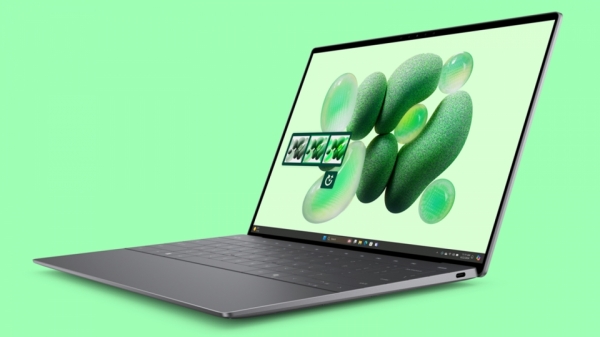
LG Display (LGD) has announced that it has started mass production of the industry’s first 13” Tandem OLED panel for laptops. LGD has been able to make it around 40% thinner and 28% lighter than existing OLED laptop screens, enabling sleek design and greater portability. The new panel combines convenience and performance with high definition. It boasts a WQXGA+ (2880×1800) high resolution and accurate color expression that meets 100% of the DCI-P3 standard color area established by the Digital Cinema Initiatives (DCI), allowing high-definition content to be presented with increased clarity. With OLED’s characteristic self-emissive pixels and infinite contrast ratio, it has also been certified as Display HDR (High Dynamic Range) True Black 500 by the Video Electronics Standards Association (VESA).(CN Beta, LG, ZDNet)
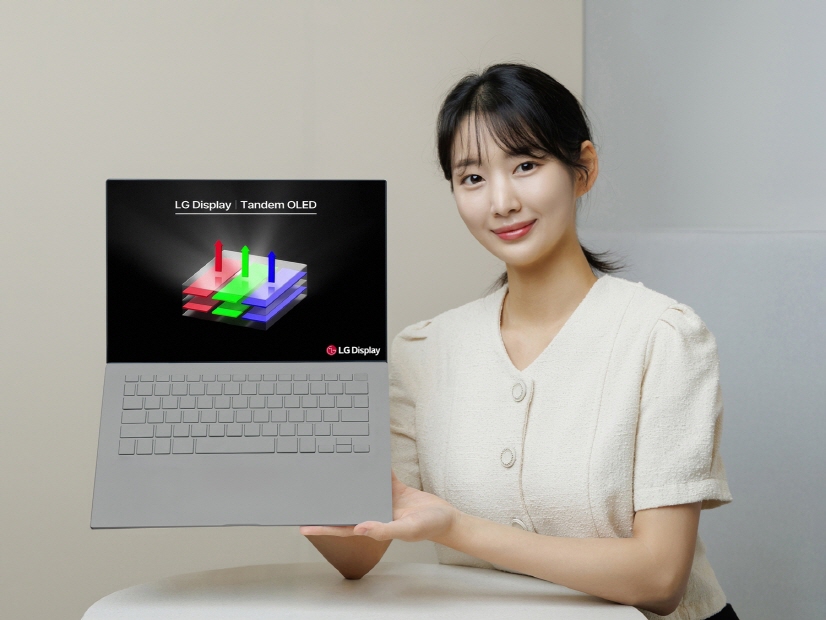

Xiaomi might be following in the footsteps of its competitors by removing chargers from its phone boxes. This speculation arises from the recent release of their Redmi 13 series in Europe, which notably does not include a charger in the package. It could mean that future Xiaomi phones, especially those released in Europe, might also come without chargers. However, it is possible that the company’s higher-end models might still include a charger as a differentiating factor.(Phone Arena, Twitter)
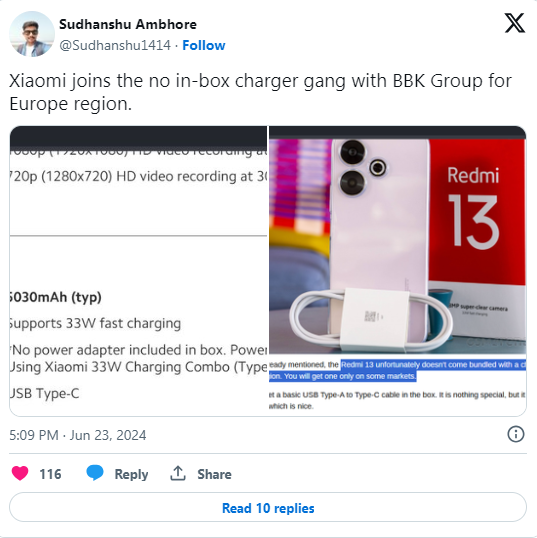
Apple has revealed that iPhones will better support third-party displays and batteries later in 2024. True Tone requires precise calibration to function properly, and it is not possible to engage a default calibration for third-party displays, which can result in unexpected behaviour. For this reason, Apple disables the True Tone feature when third-party displays are used but enables all other aspects of the display. To offer more complete support for third-party parts, starting later in 2024, Apple will allow consumers to activate True Tone with third-party parts to the best performance that can be provided. Currently, battery health metrics such as maximum capacity and cycle count are not presented to consumers whose devices have third-party batteries. This is because the accuracy of these metrics cannot be verified by Apple. In fact, an Apple internal analysis has found that some third-party batteries sold as new are second-hand, with battery health metrics manipulated to appear as new. To improve support for third-party batteries, starting later in 2024, Apple will display battery health metrics with a notification stating that Apple cannot verify the information presented.(MacRumors, The Verge, Apple)

SK hynix has reported that the manufacturing yield of the 3D DRAM, stacked in 5 layers, recorded 56.1%. This means that about 561 viable devices were produced out of approximately 1,000 3D DRAMs manufactured on a single test wafer. SK hynix has also indicated that while the potential of 3D DRAM is promising, a substantial development process is necessary before commercialization can be achieved. They pointed out that unlike the stable operation of 2D DRAM, 3D DRAM exhibits unstable performance characteristics and would need to stack 32 to 192 layers of memory cells to be viable for general use.(CN Beta, Business Korea)
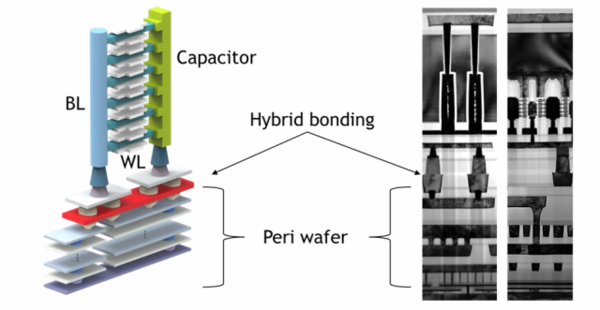

Chairman of Huawei Mobile BG, Richard Yu has said that 2024 is the first year of 5.5G commercialization, which will bring higher bandwidth and lower latency. The downlink rate will increase 10 times to 10Gbps, the uplink rate will increase to 1Gbps, and the number of connections will reach 100B. Previously, Huawei’s rotating chairman Eric Xu has revealed that Huawei is actively promoting the commercialization of 5.5G technology and is committed to building an “information highway” to achieve ubiquitous, wide and fast network connections.(CN Beta, YouTube)
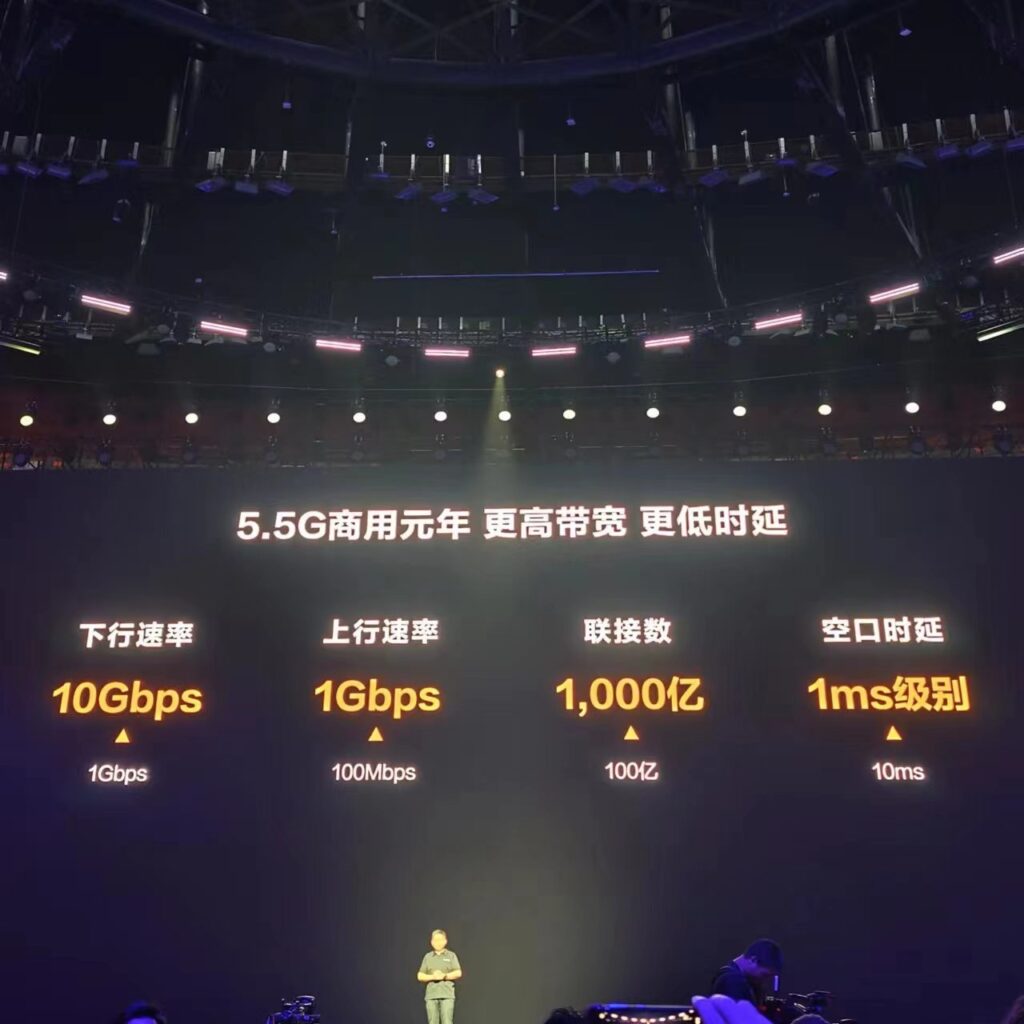
The launch ceremony of the first batch of satellites for the “Thousand Sails Constellation” network will be held in Taiyuan on 5 Aug2024, which means that the Chinese version of “Starlink” will soon shine in the starry sky. The “Thousand Sails Constellation” plan is the “G60 Starlink” plan. According to the plan, the first phase will complete the launch of 1,296 satellites, and in the future, a network of more than 14,000 low-orbit broadband multimedia satellites will be built. (CN Beta, Investing, Weibo)
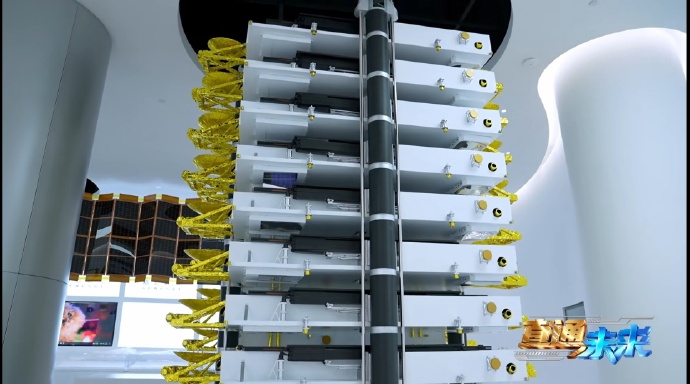

Apple has announced that its Apple Diagnostics for Self Service Repair — a software tool that enables users to troubleshoot issues — is now available in 32 European countries, including the U.K., France, Germany, and the Netherlands. Launched in the U.S. in Dec 2023, Diagnostics gives users the same ability as Apple Authorized Service Providers and Independent Repair Providers to test products for optimal parts functionality and performance, and it helps identify which parts may need repair. With this expansion, Apple Diagnostics for Self Service Repair now supports iPhone, Mac, and Studio Display models in 33 countries and 24 languages.(Android Authority, Apple)
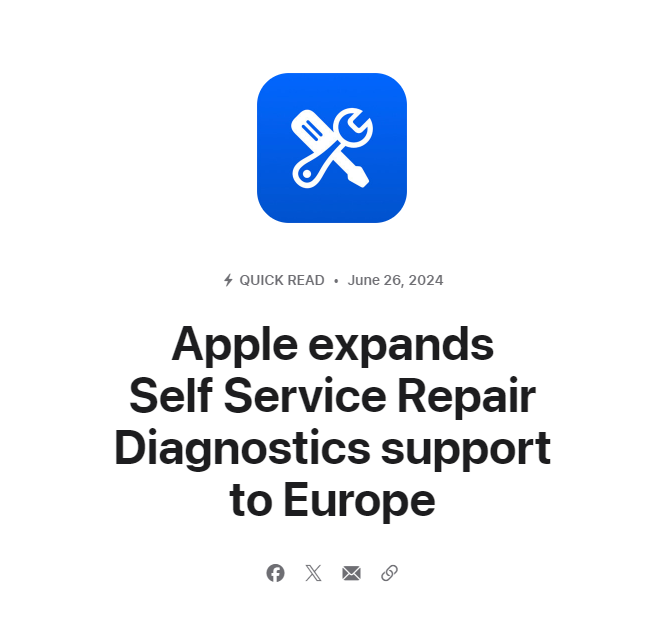
Apple has published its list of principles it follows in product design to keep items like the iPhone durable, while simultaneously balancing the need for repairability. Apple offers in a document titled “Longevity, by Design” what it works towards when it creates its hardware. It also discusses what can and should happen after said hardware gets into consumer hands. Operating system support is also “a key pillar of product longevity”, thanks to security updates and bug fixes. Support for operating systems “extend well beyond the historic industry norm,” with up to six years of support from the device’s original release. Apple believes that prioritizing product longevity instead of repairability create “meaningful reductions in environmental impact”. Apple has doubled the size of its service and repair network in the last five years. The company also says that it is committed to supporting third-party repair services and repair tools.(CN Beta, Apple Insider, Apple)
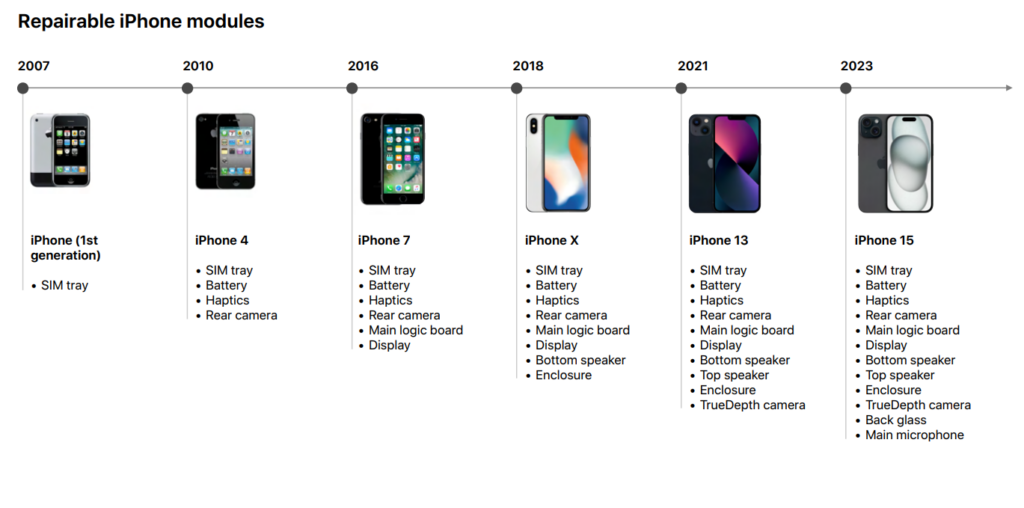

Rivian and Volkswagen Group intend to enter a joint venture to create next generation software-defined vehicle (SDV) platforms to be used in both companies’ future electric vehicles. Volkswagen Group to invest an initial USD1B in Rivian, with up to USD4B in planned additional investment for a total expected deal size of USD5B. Joint venture is expected to build on Rivian’s industry-leading software and electrical architecture to create best-in-class software-defined vehicle technology platform.(Engadget, Business Wire)
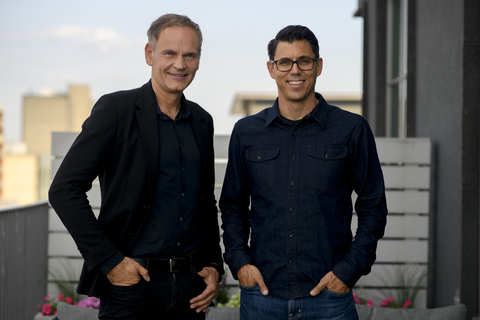
Electric Vehicle (EV) manufacturer VinFast is undeterred by the global slowdown in EV growth and the company’s underperformance in the US market, as it continues its expansion in Asia. Nhat Vuong Pham, founder of VinFast and chairman of its parent group Vingroup, pledged to invest at least another USD1B of his personal wealth into VinFast Auto, providing the capital needed for expansion of the struggling electric vehicle maker. He revealed that the VinFast factory in India will commence operations in 1H25, 6 months ahead of schedule. VinFast’s Indonesian factory is planning to start production by the end of 2025, ahead of the original 2026 target. Vuong stated that the initial production capacity for the Indonesian and Indian plants is 50,000 vehicles, with the potential to increase to 300,000 annually based on market demand. VinFast also plans to establish a battery manufacturing plant in India. The company has partnered with Chinese battery giant Gotion High-Tech to set up a battery joint venture in Vietnam. The company set a target to deliver 100,000 vehicles in 2024 but delivered only 9,689 in 1Q24. (Energy Connects, Digitimes, Bloomberg)
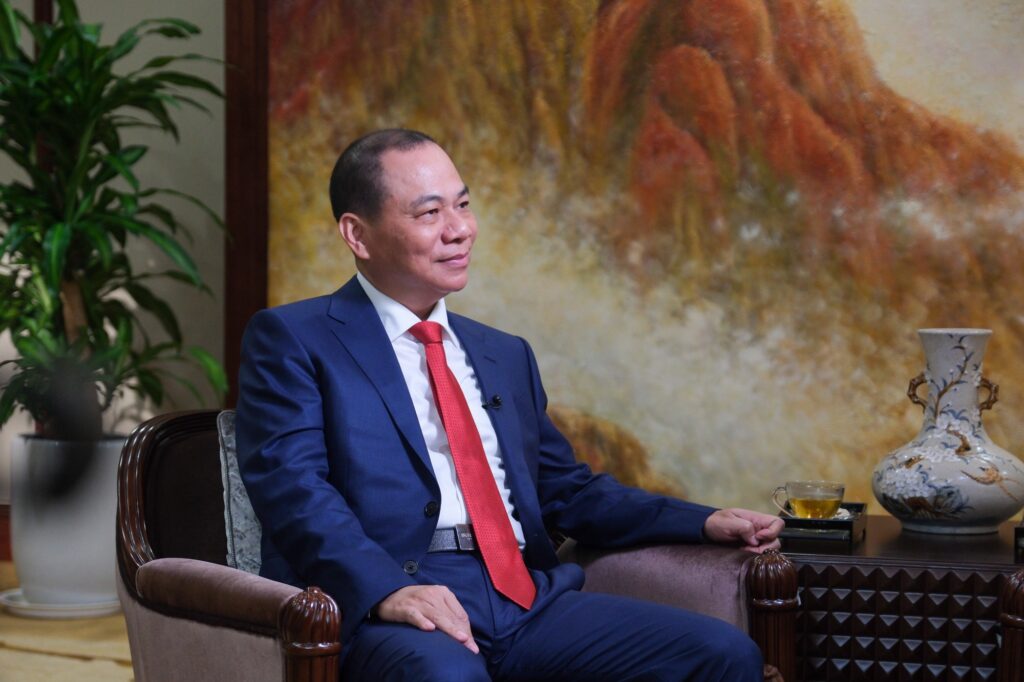
Hongqi, the luxury car brand under Chinese state-owned automotive giant FAW Group, has partnered with Chinese new energy vehicle startup Nio on charging network interoperability. Hongqi users can use the marque’s app to check the location, price, availability, and other information about Nio’s charging piles in real-time across China, the pair announced yesterday. Hongqi users can also scan QR codes to charge and pay with the app. Nio had 2,435 battery swap stations and 22,705 charging piles in China as of yesterday. In the past six months, it joined hands with Changan Automobile, Zhejiang Geely Holding Group, Xpeng Motors, Jiyue Auto, Lotus Technology, and IM Motors on charging network interoperability. Moreover, Nio partnered with seven Chinese carmakers, such as FAW, Changan Auto, Geely, and GAC Group, on battery swapping.(CN Beta, Reuters, Yicai Group)
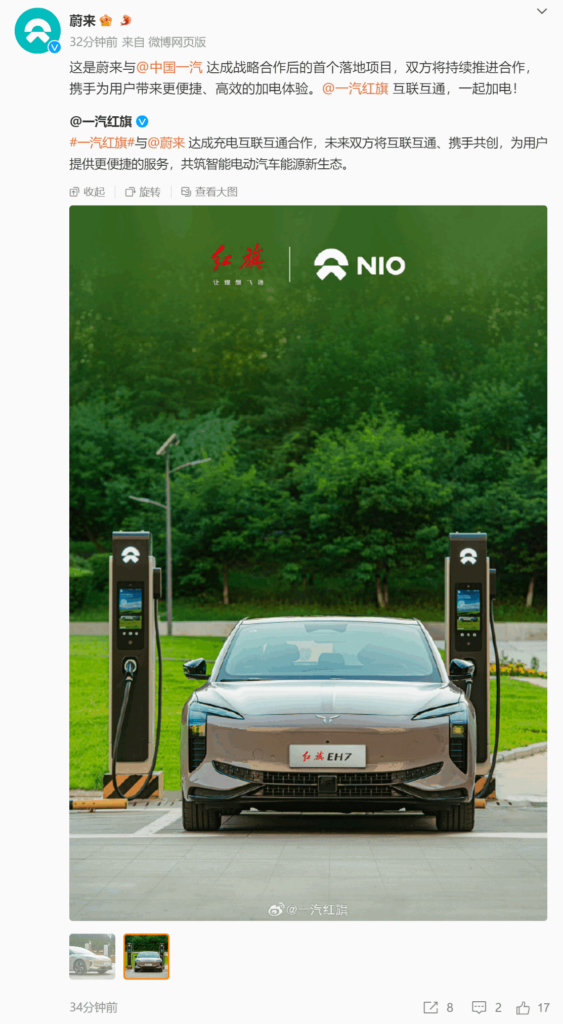
The China-based EV maker Leapmotor and US-based semiconductor company Ambarella have signed a strategic cooperation agreement. Leapmotor will use Ambarella’s System-on-Chip (SoC) to enhance the smart driving experience. Leapmotor will develop an advanced intelligent driving solution with Ambarella’s CV3-AD family of automotive AI domain controller Systems-on-Chip (SoCs). Ambarella said the CV3-AD family is based on a 5nm automotive-grade process technology and complies with the Automotive Safety Integrity Level (ASIL). These SoCs support centrally processed environmental sensing suites and integrate a high-quality image signal processor to enable ultra-low latency, low noise, and high dynamic range images. Ambarella also said the CV3-AD SoC family provides hardware AI acceleration and centralized fusion of raw LiDAR and millimeter-wave radar data while leaving ample AI and compute performance for additional algorithm design and deployment.(Digitimes, Ambarella, Yahoo, Yiche, Sohu)
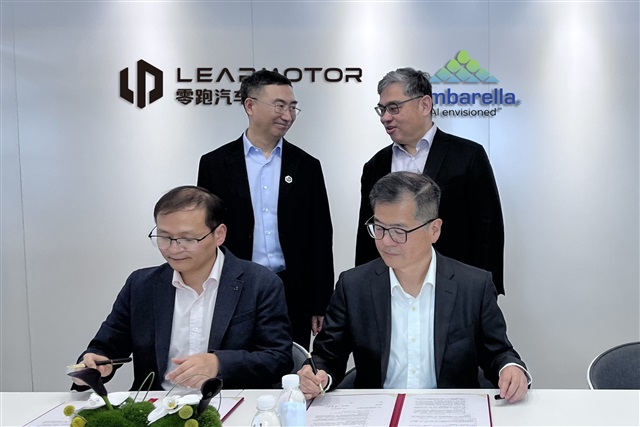
Chinese electric carmakers may be crying foul over the European Union’s imposition of additional tariffs, but they have several options to keep growing, including shifting production to the continent and using fat profit margins to absorb some of the hit. Companies could also turn their attention to new markets in the Middle East, Latin America, and Southeast Asia, where EVs comprise a small but growing segment of the passenger car market. The European Commission on Wednesday formally notified automakers including BYD, Geely Automobile, and MG owner SAIC Motor Corp of the additional levies on battery electric cars, which will take tariffs to as high as 48%. China’s EV manufacturers have been pushing more aggressively into Europe amid a domestic price war and years of building a lead in the technology. (Digitimes, Asia Times, Bloomberg)
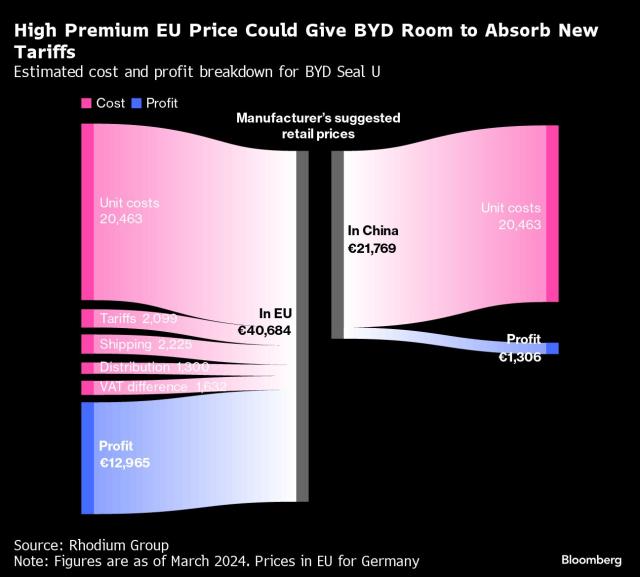

According to Bloomberg’s Mark Gurman, Apple has already been working on a cheaper version of Vision Pro for years, aiming to sell in USD1,500-2,000. The plan was always to introduce the Vision Pro at the high end, and then roll out the cheaper model (Apple Vision) sometime afterward. This cheaper device, codenamed N107, is now the focus of Apple’s Vision Products Group. The company hopes to bring that product to market as early as the end of 2025. However, Apple is struggling to get the cost down while retaining critical features. It is dealing with some difficult trade-offs. Meanwhile, the company has renewed efforts to develop AR-only glasses. These would be lightweight spectacles that users could easily wear all day. There has been speculation that Apple could bring out these smart glasses in a few years, this includes potential launches by 2026 or 2027 at the earliest. (Apple Insider, Bloomberg)
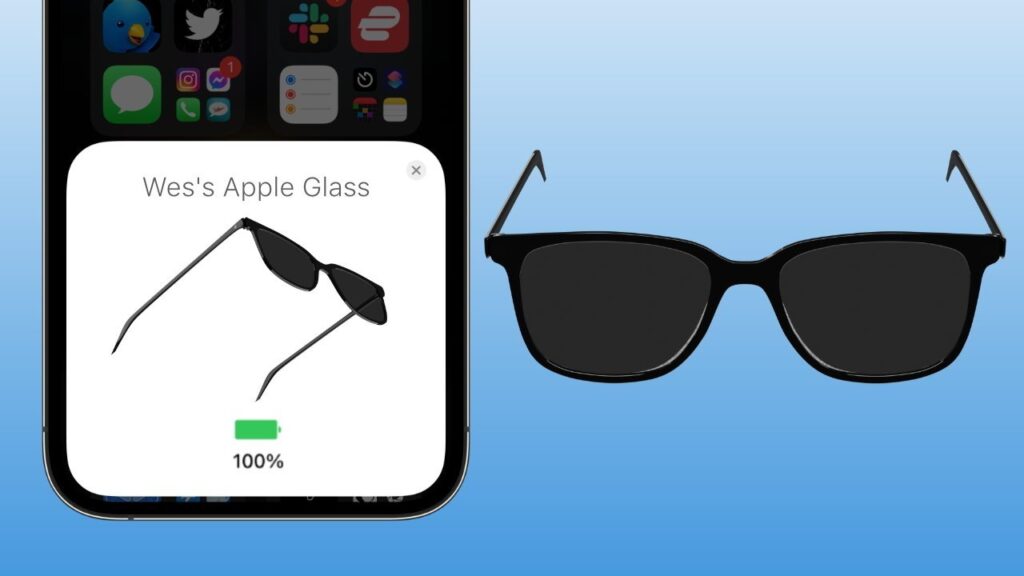

A federal judge overseeing a USD30B preliminary swipe-fees settlement between Mastercard, Visa and retailers formally rejected the deal. reached their proposed multi-billion antitrust settlement with US merchants in Mar 2024. The settlement would lower swipe fees, or interchange fees, that a retailer must pay when a customer makes a purchase using their card. The details of ruling made by Judge Margo Brodie of the US District Court of the Eastern District of New York have not been made public. But a memo released by the court said that she was “not likely to grant final approval” to the preliminary settlement absent any changes. Retailers typically are charged 2% of the total customer transaction in swipe fees — but they can be as much as 4% for some premium rewards cards. The proposed settlement would have lowered those fees by at least 0.04% percentage points for a minimum of 3 years. (CN Beta, CNN, Washington Post, The Hill)
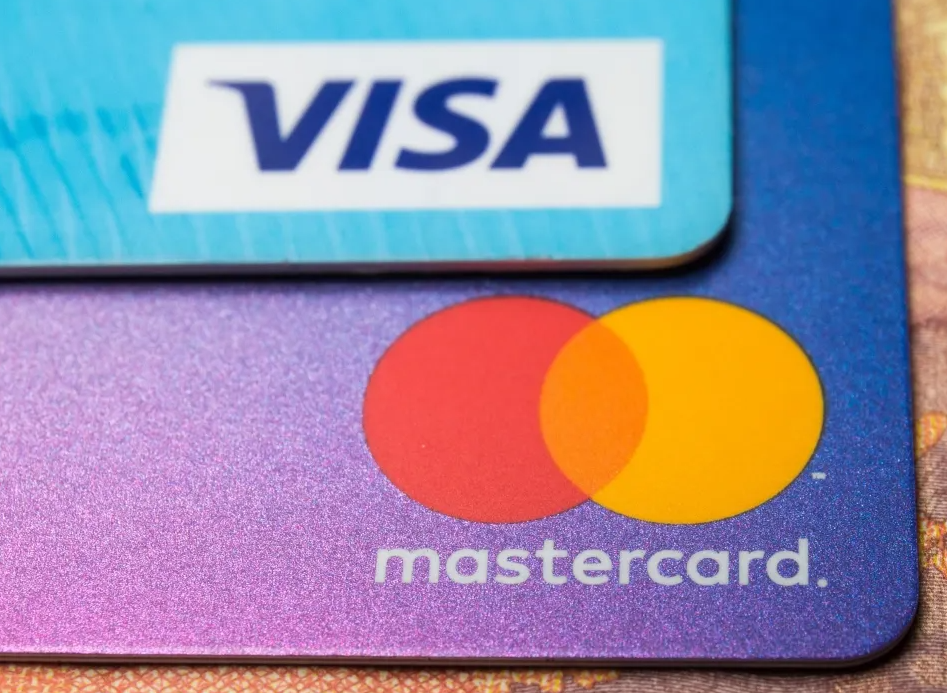

Mozilla is looking to bring more AI features into Firefox. They have begun experimenting with an AI chatbot in Firefox Nightly. In the Settings menu of the latest version of Firefox Nightly, select Nightly Experiments in the left sidebar and check the box for AI Chatbot Integration on the right. After that, user needs to pick a chatbot to use in Firefox, which has choices of Google Gemini, ChatGPT, HuggingChat, and Le Chat Mistral. User can use it to summarize information, test user’s knowledge and memory of an excerpt, or simplify the language of the text. User simply needs to select the text want the chatbot to work on, hover mouse cursor over an option that is relevant to the chatbot, and then choose the action want to perform. (Android Headlines, Engadget, Mozilla)
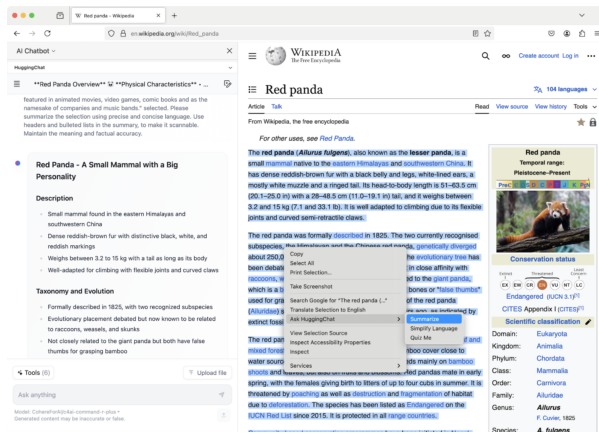
Google is allegedly working on creating artificial intelligence-powered chatbots mimicking famous people and fictional characters. These AI celebrities, YouTube influencers, and imaginary people will also serve as a template for users to build their own generative AI chatbots with customized personalities and appearances. Google may look to incorporate its generative AI chatbots through YouTube instead of using them as standalone. (CN Beta, Yahoo, The Information, TechRadar)
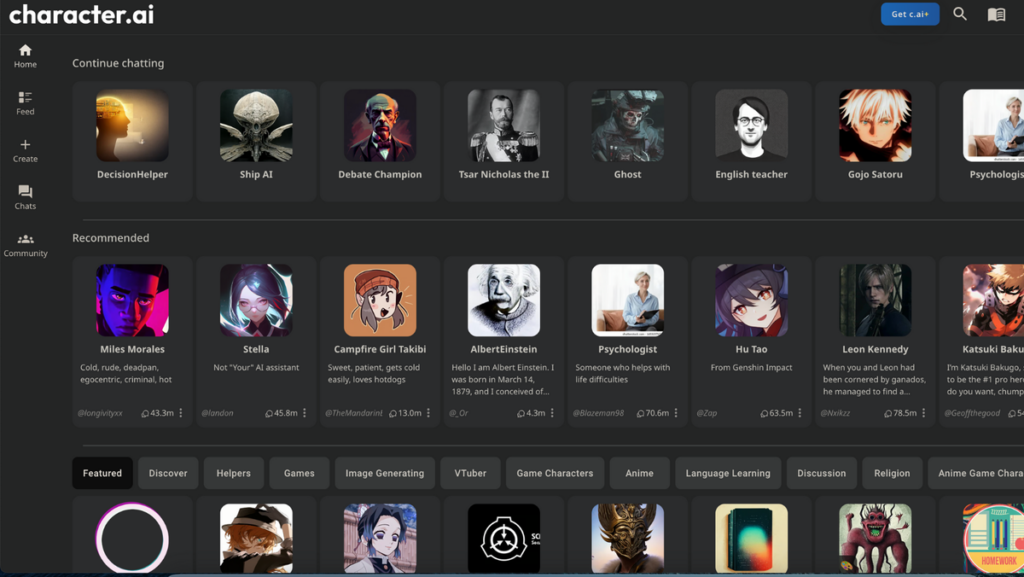
OpenAI has has acquired Multi, formerly Remotion, a startup based in New York City that focuses on screenshare and collaboration technologies for workers using Mac computers. Founded originally under the name Remotion in 2019, Multi was initially focused on building a kind of Zoom-style videoconferencing and desktop PC screensharing application for the COVID-19 pandemic era. The company raised USD13M collectively in its Series A and seed rounds from Graylock and First Round. (Softonic, Multi, CN Beta, VentureBeat, TechCrunch)
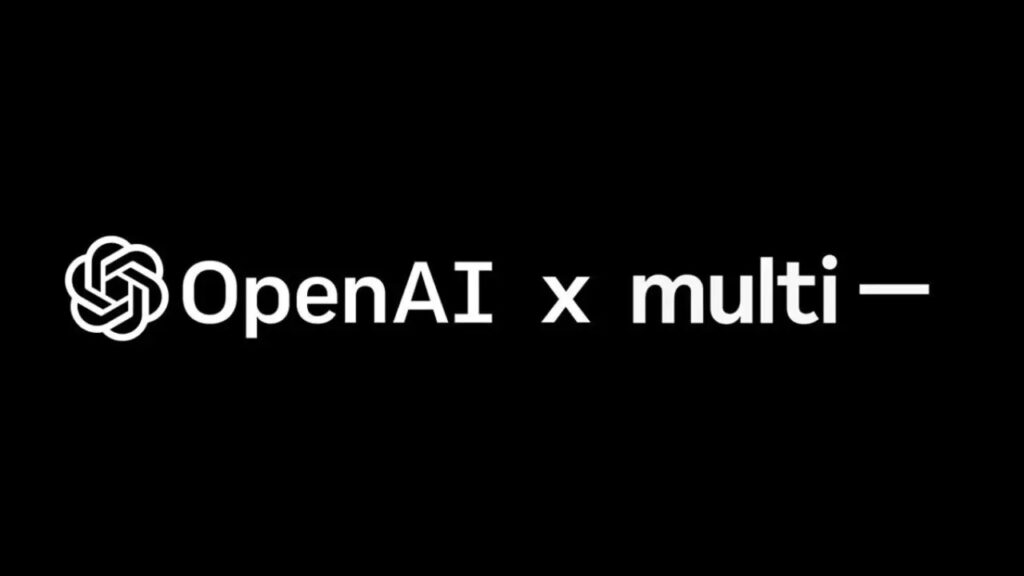
OpenAI has acquired search and database analytics startup Rockset to provide better infrastructure for its enterprise products. OpenAI said that it would integrate Rockset’s technology to “power its infrastructure across products”. Rockset, founded in 2016, has created tools that allowed companies to automatically ingest data from databases and public cloud storage services and then index that data for search and analytics applications.(VentureBeat, Rockset, OpenAI, TechCrunch, Reuters)
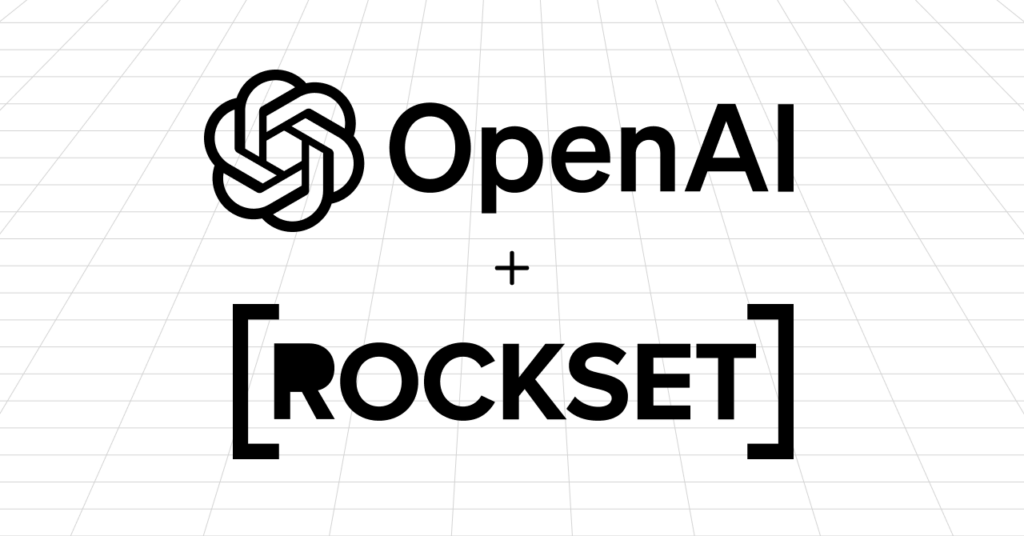
Honor has showcased some of its latest AI innovations: AI Defocus Eye Protection and AI Deepfake Detection. According to Honor, both features were made to run with on-device AI. AI Defocus Eye Protection is able to make the display intentionally induce controlled defocus in the user’s peripheral visual field. As a result, the user is able to maintain clear central vision and receive visual relief as if they were wearing defocus glasses. According to the company, its AI feature can decrease transient myopia by 13 degrees on average after reading for 25 minutes. AI Deepfake Detection is developed to help users prevent fraud and detect digitally manipulated content during video calls. This tool spots deepfakes by analyzing frame-by-frame information such as eye contact, lighting, image clarity, and video playback. If it detects any flaws, the user will see a popup that warns them that they may be talking with someone trying to scam them.(Android Authority, Digital Trends, TechRadar)

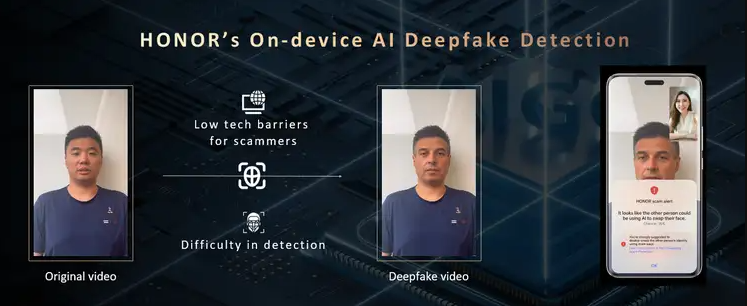
Chinese artificial intelligence (AI) companies are moving swiftly to attract users of OpenAI’s technology, following reports the U.S. firm plans to restrict access in China and other countries to its application programming interface (API), a platform that allows developers of other products to integrate its AI models. Starting from 9 Jul 2024, OpenAI will be taking additional measures to block API traffic from regions that are not on its supported countries and territories list. A total of 188 countries and regions currently support access to the API service, the Chinese mainland and Hong Kong are excluded.(Engadget, Reuters, Global Times, The Register, UDN, 36Kr)
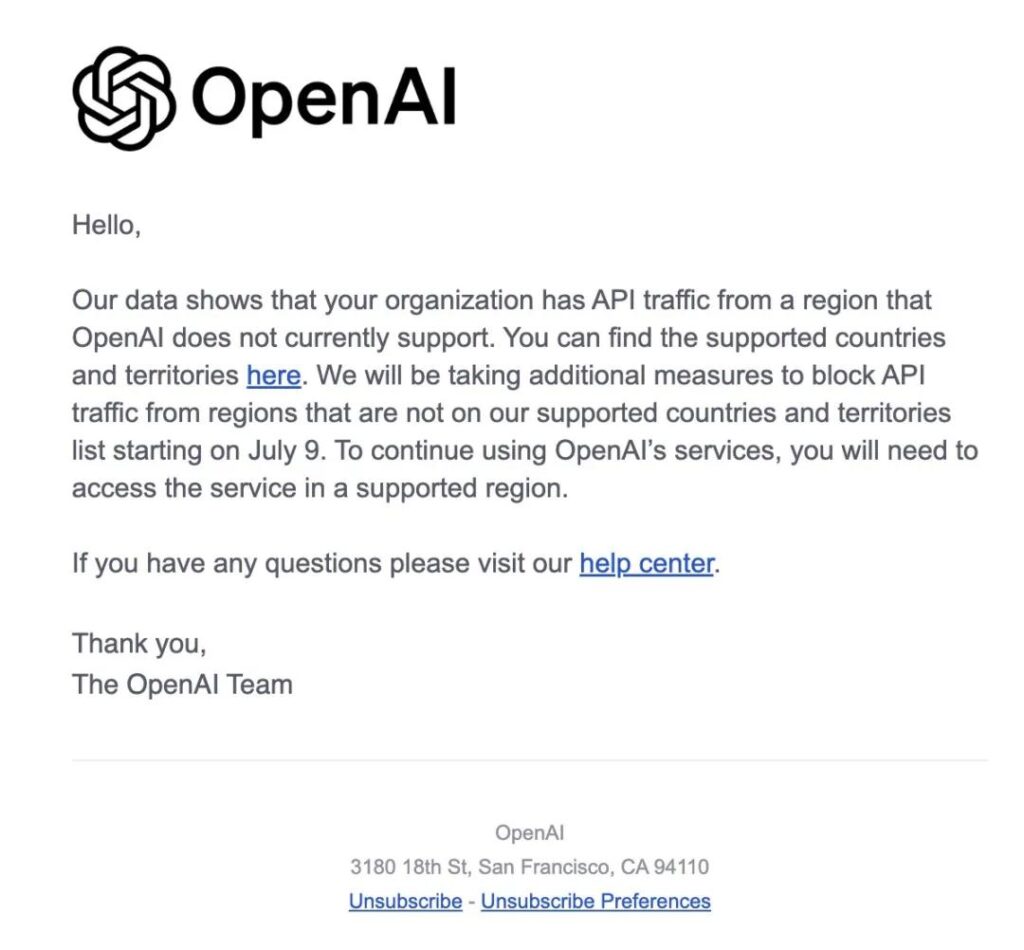
Apple has allegedly held talks with Meta about the possibility of using the company’s generative AI model. It also reportedly had similar discussions with startups Anthropic and Perplexity. As of now, though, nothing has been finalized. Apple has actually rejected overtures by Meta Platforms to integrate the social networking company’s AI chatbot into the iPhone. Discussions about a potential partnership did not reach a formal stage and Apple was not actively planning on integrating Llama into iPhones, because it does not consider Instagram owner Meta’s privacy practices stringent enough. (GizChina, WSJ, Engadget, Reuters, Bloomberg,Investopedia)